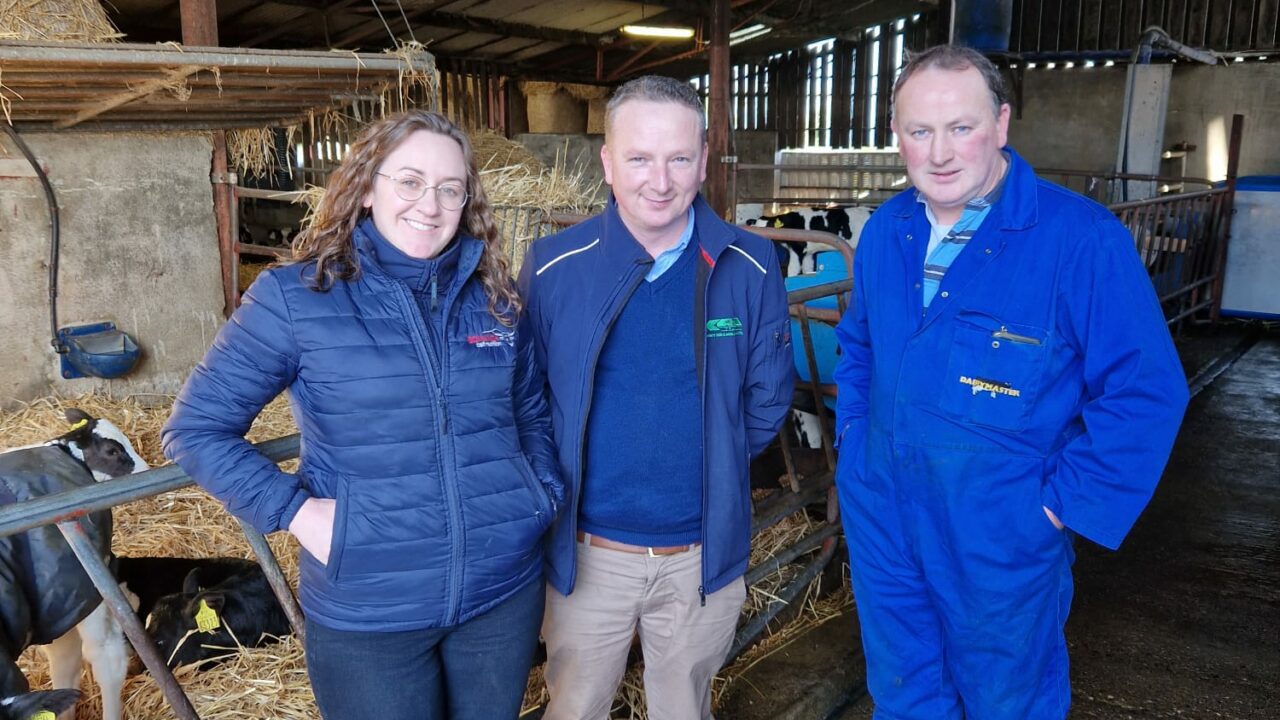Using a transition milk replacer to aid an important stage in a calf’s gut development has been helping a Co. Kerry dairy farmer avoid major heifer growth and health checks over the last four years.
Heifers are easily achieving average daily liveweight gains of 0.90kg in their first year.
Transition milk is key to encouraging the production of acid and enzymes in the calf and aiding the full closure of the gut wall and is an important part of Donie and Breda Ryan’s calf rearing protocols.
Donie farms near Milltown where he runs a herd of Holstein Friesian cows, hoping to have all heifer calves born in the first six weeks of calving during January and February.
Sexed semen is used on heifers, achieving an in-calf to first conception rate of 80%, all of which were offered transition-milk replacer.
Calving time protocols
In the week before calving, cows are moved into a straw-bedded group pen with individual calving pens alongside this. During this week, a key element is increasing concentrates to a similar rate as post-calving.
Cows and heifers carrying heifer calves are calved in individual pens. These cows are identified at scanning by Dan Ryan of Repodoc.
Heifers and bulls each receive 3L of colostrum immediately after birth and are then penned individually.

They remain in these pens for a few days, according to their strength, health and ability to drink milk, before they are moved into a small group pen.
When they are deemed ready, they are relocated to a large group pen.
Improving calf digestion
In the first four weeks of 2023, 70 Holstein Friesian heifers were born. Because of this, some calves had to be introduced to the automatic feeder sooner than might otherwise have been done.
But this was a decision Donie was happy to make as the calf milk replacer in the feeder was Transformula, which he purchased from Noel Fealey of Kellihers Feeds & Agricultural Supplies, Ballymullen, Tralee.
This feed, manufactured by Bonanza Calf Nutrition, focuses on the specific gastrointestinal need of the young calf: Development.
According to Dr. Christine Cummins of Bonanza Calf Nutrition, a calf needs energy and Transformula provides it. What sets both it and transition milk apart from regular milk replacers and cow milk is its focus on microbial and the physical development of the gastrointestinal tract.

“The gut has no function in the foetus and only really develops in the last month of gestation and in the weeks after birth,’’ Dr. Cummins explained.
This development is both physical and microbial, she adds.
Prior to birth, the calf’s digestive system has a microbial community, or microbiome, ready to become active after birth.
The ingestion of colostrum and transition milk is key to the health of this microbiome and to the health and development of the calf, said Dr. Cummins.
“The microbiome is influenced from the very beginning and prebiotics in colostrum help kickstart the calf’s digestive and immune system, followed by transition milk.
“The gut at birth is also very porous, which allows colostrum antibodies to be absorbed whole, but it is also a site for bad bugs to enter the calf’s system,” Dr. Cummins added.
As it takes several days for the gut to become much less porous, it means that the calf is highly vulnerable to pathogens for quite some time.
Transformula
Feeding transition milk – milk produced by the cow after colostrum – is key to encouraging the production of acid and enzymes in the calf and the full closure of the gut wall, said Dr. Cummins.
After their colostrum feed, Donie’s offers his calves 3L of Transformula, morning and evening, for three or more weeks.
It is typically after this period that they are moved onto the automatic feeder.
Donie says Transformula eases his workload as his calves are healthier than they have ever been and no treatments for scours are needed.
Donie said: “This system reduces the risk of disease and labour needs as I can choose to feed the heifer calves before or after milking, it provides a better routine.
“It’s so much easier to use Transformula than have to collect and sort all the transition milk, not to mention transporting it to the calves.”
It also leaves him with a greater pool of transition milk for bull and beef calves, promoting their health and development too and reducing health risks across all calves.
For further information on Transformula, click here.

